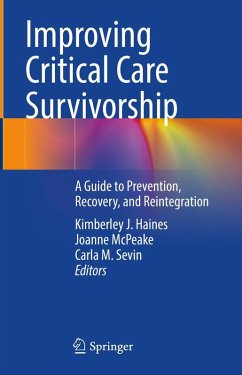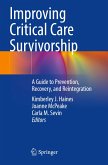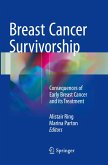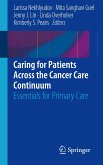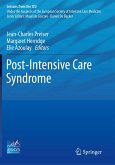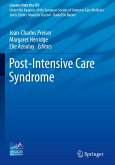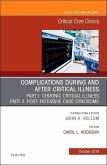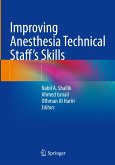This book provides a comprehensive overview of improving critical care survivorship. Comprised of four sections, the text presents interventions that can be used to improve patient outcomes and reduce the burden of post-intensive care syndrome across the arc of care, from the ICU to returning home. The first section of the text focuses on preventing adverse outcomes in the ICU, with an emphasis on implementing early mobilization, engaging and supporting families, and employing various forms of therapy. The second section revolves around enhancing recovery post-ICU, focusing on physical and neurocognitive rehabilitation programs, peer support, and poly-pharmacy management. Community reintegration is the subject of the third section, with emphasis on socioeconomic reintegration, healthcare utilization, and volunteerism in ICU recovery. The book concludes with a section on future considerations, specifically spotlighting preliminary ideas that address long-term sequelae and international collaboration to solve critical care challenges.
Written by experts in the field, Improving Critical Care Survivorship: A Guide for Prevention, Recovery, and Reintegration is a valuable resource for critical care clinicians and researchers interested in improving the quality of patient survival after ICU admission.
Hinweis: Dieser Artikel kann nur an eine deutsche Lieferadresse ausgeliefert werden.
Written by experts in the field, Improving Critical Care Survivorship: A Guide for Prevention, Recovery, and Reintegration is a valuable resource for critical care clinicians and researchers interested in improving the quality of patient survival after ICU admission.
Hinweis: Dieser Artikel kann nur an eine deutsche Lieferadresse ausgeliefert werden.
"This book gives a great depth of insight into how the quality of survivorship can be improved through focusing on current best practise and gaps for future research. ... gives valuable insight into the current evidence-based strategies and methods used to try to prevent and manage PICS throughout the patient's critical illness. It provokes thoughts on the simple measures that can have lasting meaningful impacts and would be a valuable resource for all clinicians involved in critically ill patient journeys." (Annika Jarman, Journal of the Association of Chartered Physiotherapists in Respiratory Care, Vol. 54 (1), 2022)

